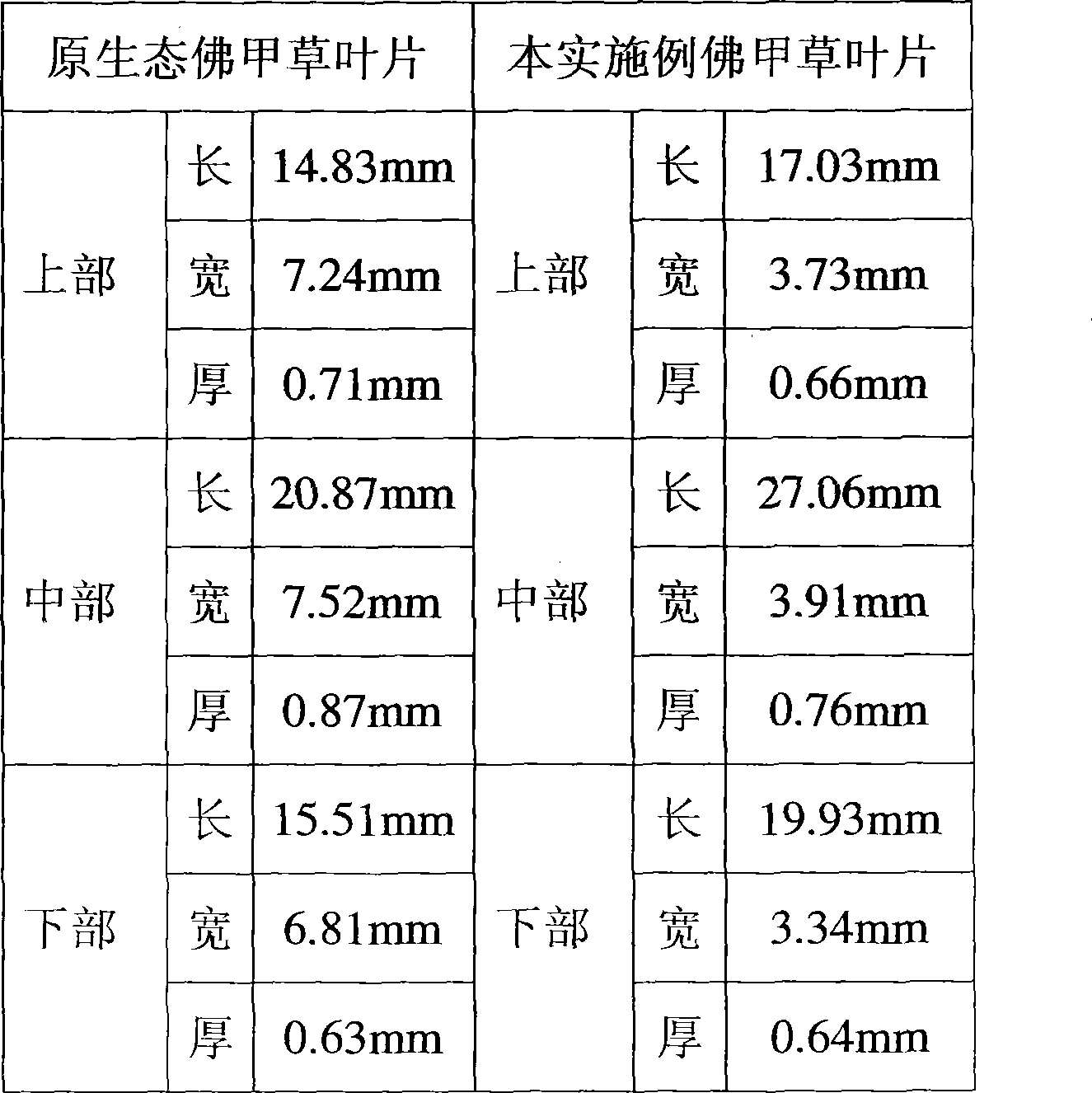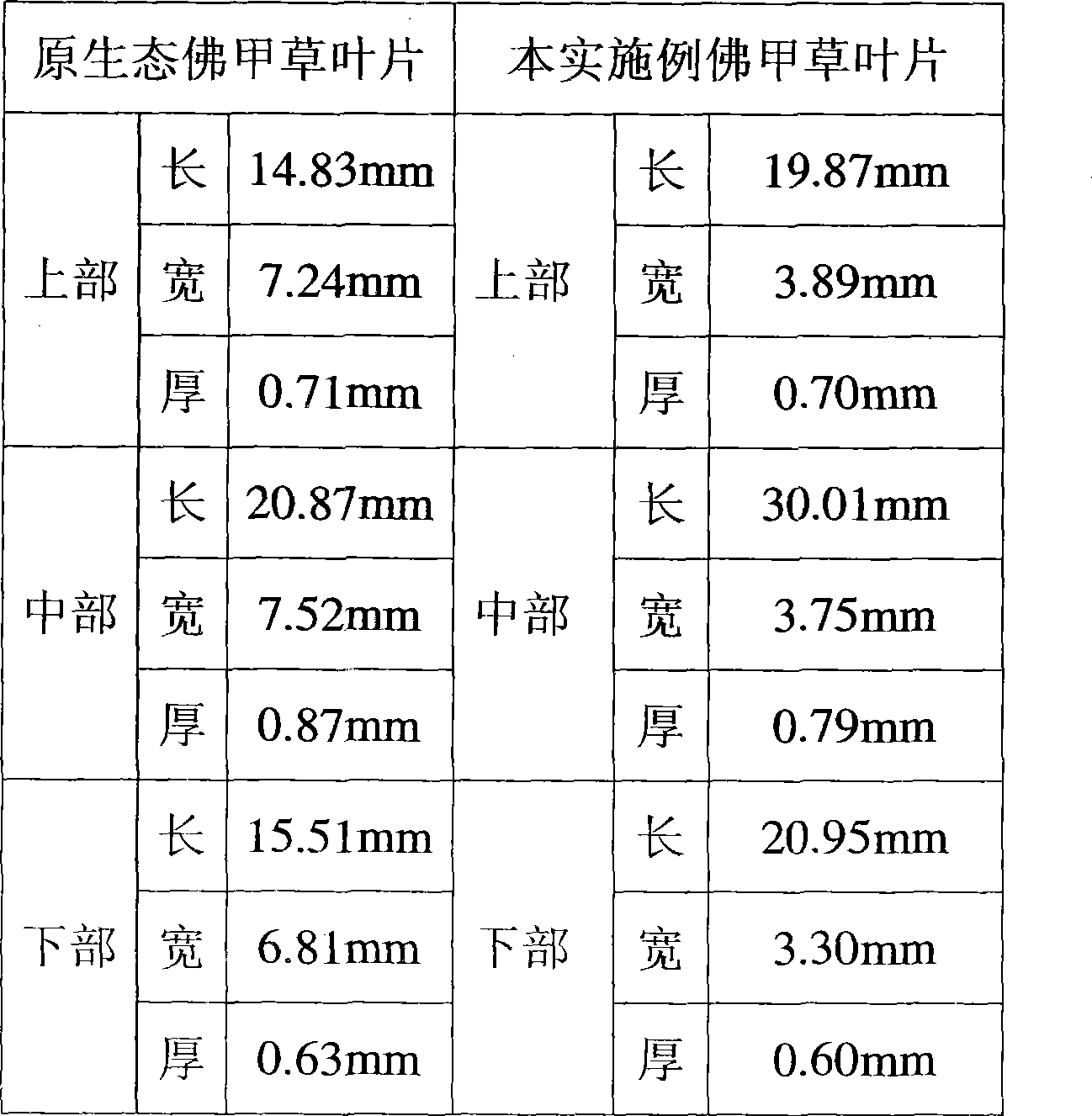Method for cultivating needle linear stonecrop by introduction and domestication
A technology of S. japonica and substrate, which is applied in the field of plant cultivation, can solve problems such as difficulty in achieving large-scale production, cumbersome methods of cultivating S. sageia, unstable performance of S. japonica, etc., and achieve improved roof greening and heat insulation effects , luxuriant branches and leaves, good growth effect
- Summary
- Abstract
- Description
- Claims
- Application Information
AI Technical Summary
Problems solved by technology
Method used
Image
Examples
Embodiment 1
[0024] Example 1 Introduction, domestication and cultivation of S. chinensis
[0025] The method for the introduction and domestication of the present embodiment to cultivate S. japonica is carried out in the manner of direct introduction and domestication, including the following steps:
[0026] (1) Introduce and plant different original ecology of S. japonica seedlings from Jiangxi, Hunan, Jiangsu, Shanghai, Beijing and other places, and the introduction time is from March to May;
[0027] (2) The method of carrying out asexual ramet propagation to the introduced S. japonica seedlings is planted, that is to say, the S. syringa s. Choose well-growing S. japonica seedlings as the next-stage propagation material; the planting substrate is obtained by mixing river sand, sawdust, and humus in a weight ratio of 1:1:1, and the thickness of the substrate is 50mm.
[0028](3) Simulate the growth environment of S. japonica on the roof, adopt the planting substrate mixed with river sa...
Embodiment 2
[0043] Embodiment 2 Introduction, domestication and cultivation of S. chinensis
[0044] The method for the introduction and domestication of the present embodiment to cultivate S. japonica is carried out in the manner of direct introduction and domestication, including the following steps:
[0045] (1) Introduce and plant different original ecology of S. japonica seedlings from Jiangxi, Hunan, Jiangsu, Shanghai, Beijing and other places, and the introduction time is September to October;
[0046] (2) The method of asexual ramet propagation is carried out to the above-mentioned imported S. japonica seedlings. Planting, both S. sagerassica is cut into 30~40mm section, is evenly sprinkled on the planting substrate, and then covers 5mm of humus soil, expands Breeding, choose the Sage grass seedlings with good growth as the next-stage propagation material; the planting substrate is obtained by mixing river sand, sawdust, and humus in a weight ratio of 1:1:1, and the thickness of t...
PUM
 Login to View More
Login to View More Abstract
Description
Claims
Application Information
 Login to View More
Login to View More - R&D
- Intellectual Property
- Life Sciences
- Materials
- Tech Scout
- Unparalleled Data Quality
- Higher Quality Content
- 60% Fewer Hallucinations
Browse by: Latest US Patents, China's latest patents, Technical Efficacy Thesaurus, Application Domain, Technology Topic, Popular Technical Reports.
© 2025 PatSnap. All rights reserved.Legal|Privacy policy|Modern Slavery Act Transparency Statement|Sitemap|About US| Contact US: help@patsnap.com


